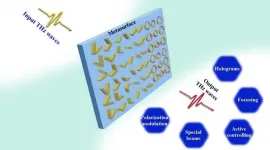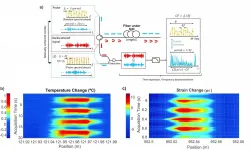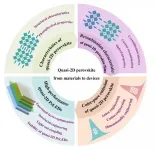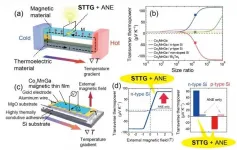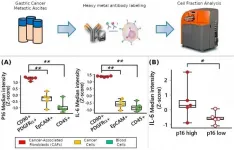(Press-News.org) The cost of the rechargeable lithium-ion batteries used for phones, laptops, and cars has fallen dramatically over the last three decades, and has been a major driver of the rapid growth of those technologies. But attempting to quantify that cost decline has produced ambiguous and conflicting results that have hampered attempts to project the technology's future or devise useful policies and research priorities.
Now, MIT researchers have carried out an exhaustive analysis of the studies that have looked at the decline in the prices these batteries, which are the dominant rechargeable technology in today's world. The new study looks back over three decades, including analyzing the original underlying datasets and documents whenever possible, to arrive at a clear picture of the technology's trajectory.
The researchers found that the cost of these batteries has dropped by 97 percent since they were first commercially introduced in 1991. This rate of improvement is much faster than many analysts had claimed and is comparable to that of solar photovoltaic panels, which some had considered to be an exceptional case. The new findings are reported today in the journal Energy and Environmental Science, in a paper by MIT postdoc Micah Ziegler and Associate Professor Jessika Trancik.
While it's clear that there have been dramatic cost declines in some clean-energy technologies such as solar and wind, Trancik says, when they started to look into the decline in prices for lithium-ion batteries, "we saw that there was substantial disagreement as to how quickly the costs of these technologies had come down." Similar disagreements showed up in tracing other important aspects of battery development, such as the ever-improving energy density (energy stored within a given volume) and specific energy (energy stored within a given mass).
"These trends are so consequential for getting us to where we are right now, and also for thinking about what could happen in the future," says Trancik, who is an associate professor in MIT's Institute for Data, Systems and Society. While it was common knowledge that the decline in battery costs was an enabler of the recent growth in sales of electric vehicles, for example, it was unclear just how great that decline had been. Through this detailed analysis, she says, "we were able to confirm that yes, lithium-ion battery technologies have improved in terms of their costs, at rates that are comparable to solar energy technology, and specifically photovoltaic modules, which are often held up as kind of the gold standard in clean energy innovation."
It may seem odd that there was such great uncertainty and disagreement about how much lithium-ion battery costs had declined, and what factors accounted for it, but in fact much of the information is in the form of closely held corporate data that is difficult for researchers to access. Most lithium-ion batteries are not sold directly to consumers -- you can't run down to your typical corner drugstore to pick up a replacement battery for your iPhone, your PC, or your electric car. Instead, manufacturers buy lithium-ion batteries and build them into electronics and cars. Large companies like Apple or Tesla buy batteries by the millions, or manufacture them themselves, for prices that are negotiated or internally accounted for but never publicly disclosed.
In addition to helping to boost the ongoing electrification of transportation, further declines in lithium-ion battery costs could potentially also increase the batteries' usage in stationary applications as a way of compensating for the intermittent supply of clean energy sources such as solar and wind. Both applications could play a significant role in helping to curb the world's emissions of climate-altering greenhouse gases. "I can't overstate the importance of these trends in clean energy innovation for getting us to where we are right now, where it starts to look like we could see rapid electrification of vehicles and we are seeing the rapid growth of renewable energy technologies," Trancik says. "Of course, there's so much more to do to address climate change, but this has really been a game changer."
The new findings are not just a matter of retracing the history of battery development, but of helping to guide the future, Ziegler points out. Combing all of the published literature on the subject of the cost reductions in lithium-ion cells, he found "very different measures of the historical improvement. And across a variety of different papers, researchers were using these trends to make suggestions about how to further reduce costs of lithium-ion technologies or when they might meet cost targets." But because the underlying data varied so much, "the recommendations that the researchers were making could be quite different." Some studies suggested that lithium-ion batteries would not fall in cost quickly enough for certain applications, while others were much more optimistic. Such differences in data can ultimately have a real impact on the setting of research priorities and government incentives.
The researchers dug into the original sources of the published data, in some cases finding that certain primary data had been used in multiple studies that were later cited as separate sources, or that the original data sources had been lost along the way. And while most studies have focused only on the cost, Ziegler says it became clear that such a one-dimensional analysis might underestimate how quickly lithium-ion technologies improved; in addition to cost, weight and volume are also key factors for both vehicles and portable electronics. So, the team added a second track to the study, analyzing the improvements in these parameters as well.
"Lithium-ion batteries were not adopted because they were the least expensive technology at the time," Ziegler says. "There were less expensive battery technologies available. Lithium-ion technology was adopted because it allows you to put portable electronics into your hand, because it allows you to make power tools that last longer and have more power, and it allows us to build cars" that can provide adequate driving range. "It felt like just looking at dollars per kilowatt-hour was only telling part of the story," he says.
That broader analysis helps to define what may be possible in the future, he adds: "We're saying that lithium-ion technologies might improve more quickly for certain applications than would be projected by just looking at one measure of performance. By looking at multiple measures, you get essentially a clearer picture of the improvement rate, and this suggests that they could maybe improve more rapidly for applications where the restrictions on mass and volume are relaxed."
Trancik adds the new study can play an important role in energy-related policymaking. "Published data trends on the few clean technologies that have seen major cost reductions over time, wind, solar, and now lithium-ion batteries, tend to be referenced over and over again, and not only in academic papers but in policy documents and industry reports," she says. "Many important climate policy conclusions are based on these few trends. For this reason, it is important to get them right. There's a real need to treat the data with care, and to raise our game overall in dealing with technology data and tracking these trends."
INFORMATION:
The work was supported by the Alfred P. Sloan Foundation.
Written by David L. Chandler, MIT News Office
Stuttgart - A team of scientists from the Max Planck Institute for Intelligent Systems (MPI-IS) in Germany, from Seoul National University in Korea and from the Harvard University in the US, successfully developed a predictive model and closed-loop controller of a soft robotic fish, designed to actively adjust its undulation amplitude to changing flow conditions and other external disturbances. Their work "Modeling and Control of a Soft Robotic Fish with Integrated Soft Sensing" was published in Wiley's Advanced Intelligent Systems journal, in a special issue on "Energy Storage and Delivery in Robotic Systems".
Each ...
THz waves have a plethora of applications ranging from biomedical and medical examinations, imaging, environment monitoring, to wireless communications, because of the abundant spectral information, low photon energy, strong penetrability, and shorter wavelength. THz waves with technological advances not only determined by the high-efficiency sources and detectors but also decided by a variety of the high-quality THz components/functional devices. However, traditional THz devices should be thick enough to realize the desired wave-manipulating functions, hindering the development of THz integrated systems and applications. Although metamaterials have been ...
Tailoring light is much like tailoring cloth, cutting and snipping to turn a bland fabric into one with some desired pattern. In the case of light, the tailoring is usually done in the spatial degrees of freedom, such as its amplitude and phase (the "pattern" of light), and its polarization, while the cutting and snipping might be control with spatial light modulators and the like. This burgeoning field is known as structured light, and is pushing the limits in what we can do with light, enabling us to see smaller, focus tighter, image with wider fields of view, probe with fewer photons, and to pack information ...
Distributed optical fiber sensing (DOFS) is currently a mature technology that allows "transforming" a conventional fiber optic into a continuous array of individual sensors, which are distributed along its length. Between the panoply of techniques developed in the field of DOFS, those based on phase-sensitive optical time-domain reflectometry (ΦOTDR) have gained a great deal of attention, mainly due to their ability to measure strain and temperature perturbations in real time. These unique features, along with other advantages of distributed sensors (reduced weight, electromagnetic immunity ...
Light-emitting diodes (LEDs) are changing the lighting and display industry and have obtained significant advances than traditional lighting sources. The traditional materials LEDs, e.g., III-V semiconductor LEDs, organic LEDs (OLEDs) and quantum-dot LEDs (QLEDs), have achieved great success and gradually realized commercialization, but still face some challenges. The OLEDs have the low carrier transport capability and exciton recombination, which would hinder the improvement of brightness. Besides, QLEDs show challenges for the tedious manufacturing process and the reliance on hydrophobic insulating long ligands also hinders their stability and electrical conductivity.
Compared with these traditional materials, quasi-2D ...
A large proportion of dementia deaths in England and Wales may be due to socioeconomic deprivation, according to new research led by Queen Mary University of London.
The team also found that socioeconomic deprivation was associated with younger age at death with dementia, and poorer access to accurate diagnosis.
Dementia is the leading cause of death in England and Wales, even during the COVID pandemic, and is the only disease in the top ten causes of death without effective treatment.
The research, published in the Journal of Alzheimer's Disease, examines Office for National Statistics mortality data for England and Wales, and finds that in 2017, 14,837 excess dementia deaths were attributable to deprivation, equating to 21.5 per cent of all dementia deaths ...
Uncovering detailed travel patterns and habitat use of sharks along and across shelf territories has been historically challenging - especially for most pelagic shark species - which remain offshore for most of their lives. Their vertical diving behavior has been a subject of inquiry for a long time, and for young sharks in particular, has remained elusive.
Using cutting-edge 3D satellite technology, a study led by Florida Atlantic University's Harbor Branch Oceanographic Institute, in collaboration with NOAA's National Marine Fisheries Service; OCEARCH; The South Fork Natural History Museum and Nature Center; and the Wildlife Conservation Society, is ...
Of the many perplexing questions surrounding SARS CoV-2, a mysterious new pathogen that has killed an estimated 2.6 million people worldwide, perhaps the most insistent is this: why does the illness seem to strike in such a haphazard way, sometimes sparing the 100 year old grandmother, while killing healthy young men and women in the prime of life?
A new study by Karen Anderson, Abhishek Singharoy and their colleagues at the Biodesign Institute at Arizona State University, may offer some tentative clues. Their research explores MHC-I, a critical protein component of the human adaptive immune system.
The research suggests that certain variant ...
A NIMS research team devised a new thermoelectric generation mechanism with a hybrid structure composed of thermoelectric and magnetic materials. The team then actually fabricated this structure and observed the record-high thermopower appearing in the direction perpendicular to a temperature gradient (i.e., transverse thermoelectric generation). These results may offer insights into new mechanisms and structural designs applicable to the development of versatile energy harvesting technologies and highly sensitive heat flux sensors.
The Seebeck effect is a phenomenon in which a temperature gradient across a metal or semiconductor is converted into a thermoelectric voltage. Because this effect can be used to convert waste heat into electrical energy, its potential applications (e.g., ...
Through an analysis of cellular components (cell fractions) from malignant ascites (fluid buildup in the abdomen caused by gastric cancer), a research collaboration based in Kumamoto University (Japan) has demonstrated that cellular senescence of cancer-associated fibroblasts (CAFs) play an important role in the peritoneal dissemination of gastric cancer foci (cells different from surrounding cells). This understanding should enable the development of new treatments for cancer dissemination in the peritoneum by targeting cancer cells at focal sites and CAFs in patients with gastric cancer.
Peritoneal dissemination ...

